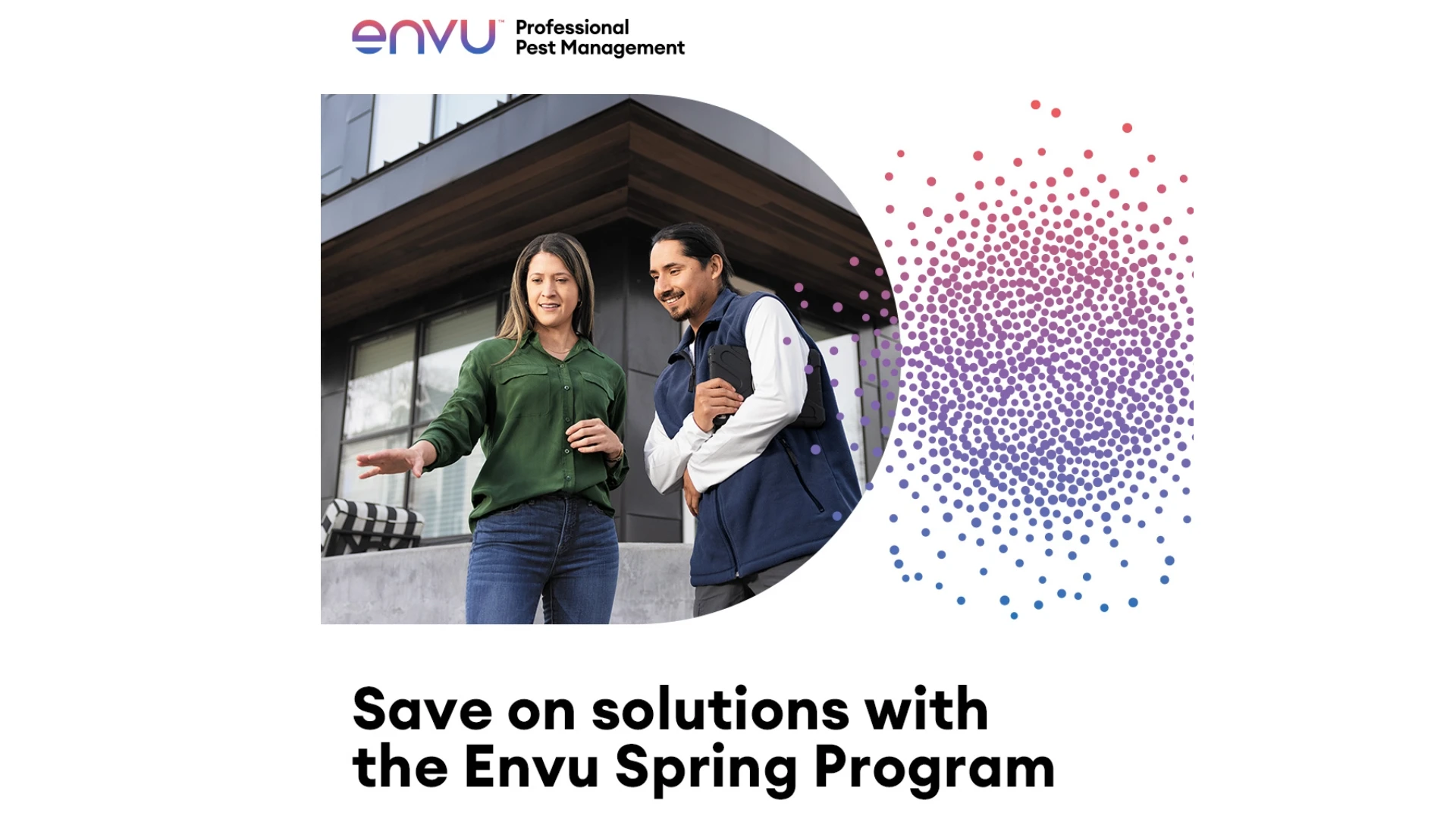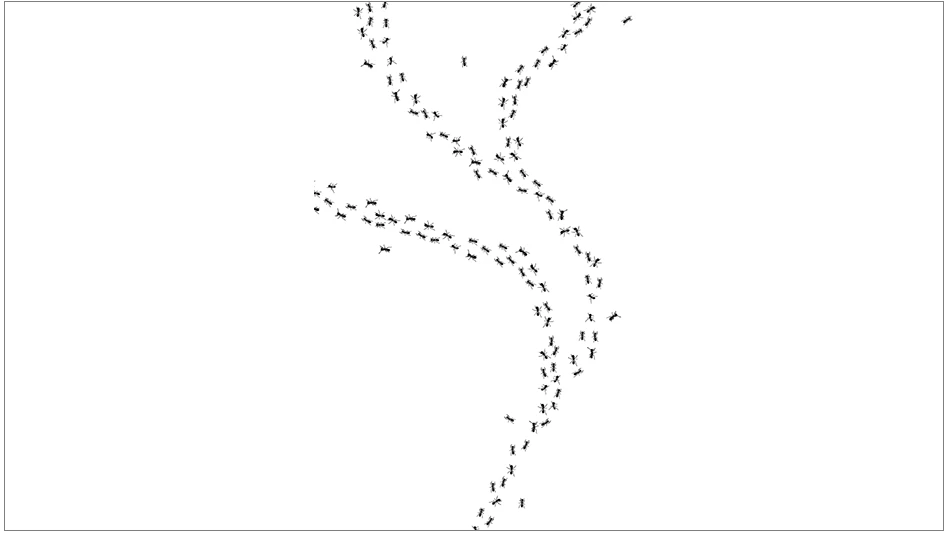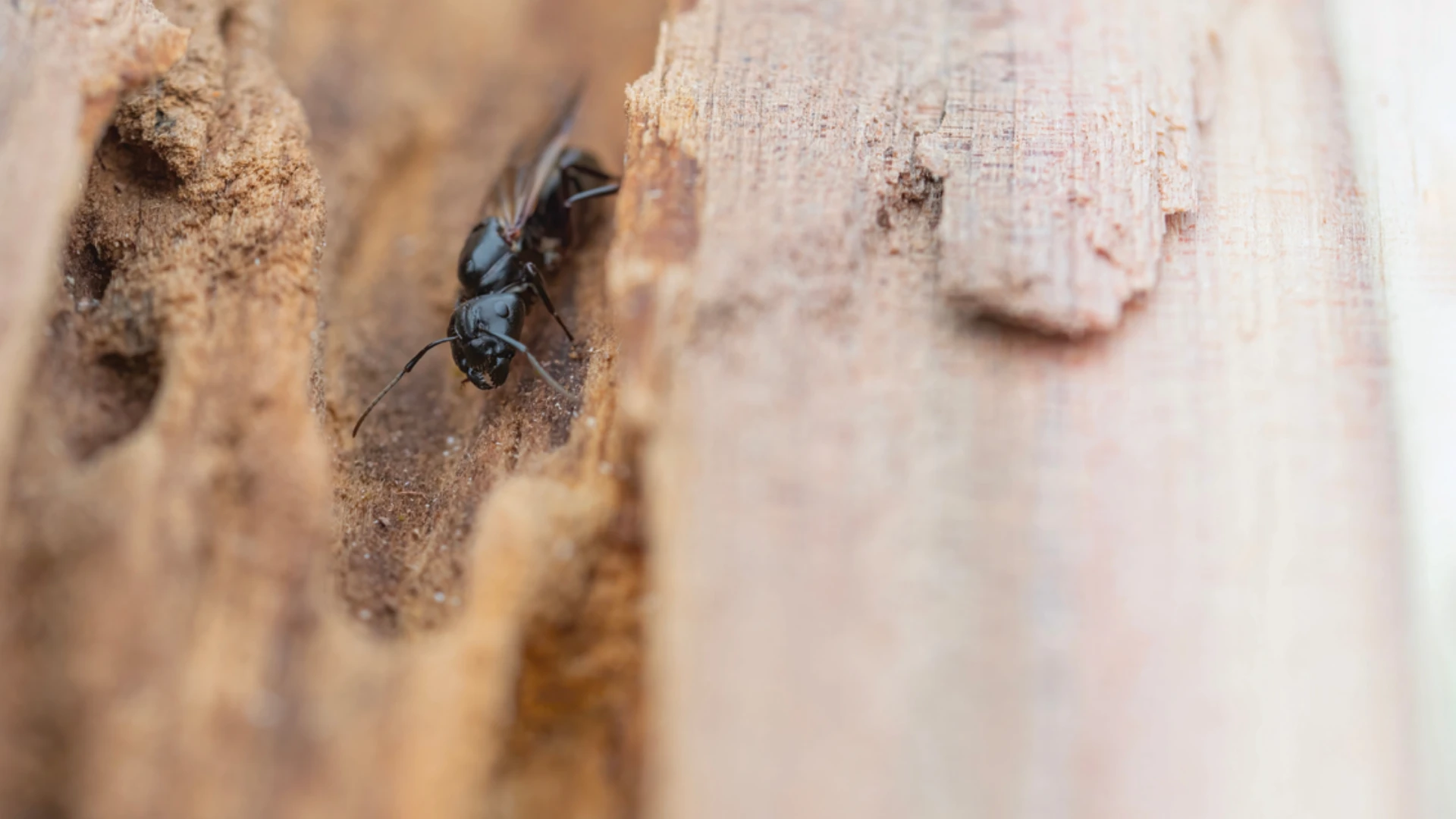There’s no escaping the fact that now more than ever consumers are thinking green. From the workplace to the home, green is seemingly everywhere. And the green trend hasn’t escaped the pest control industry. Innovative PCOs have been working to fill this market need by adding green pest management services to their offerings. And just as PCOs have worked diligently to provide green pest control solutions to consumers, so too have the industry’s product and service providers. The following series of articles examines how the pest control industry is meeting the green challenge head on. (Editor’s note: PCT will continue covering green topics in the coming months. Manufacturers or pest management firms, if you have a green product or service offering you would like featured in a future issue of PCT, please send information to jdorsch@giemedia.com.)
Green Pest Control: Are Homeowners Interested?
Green is a hot topic in the pest control industry, but just how much interest do homeowners have in green pest control services?
Researcher Gary Curl, president, Specialty Products Consultants (SPC), Mendham, N.J., uncovered some interesting findings relating to green pest control services in his recent study “A Strategic Analysis of the U.S. Structural Pest Control Industry — 2007 Season.” According to the study, 38.6 percent of respondents answered that homeowners are asking that they use more “environmentally friendly” or “green” products to control their pest problems. Curl asked this same question for SPC’s 2006 survey, and 35.3 percent answered that homeowners were asking for these types of products. In total, in the 2006 survey, 287 respondents out of 814 (35.3 percent) said they were being asked to provide such a service vs. 309 out of 801 (38.6 percent) in 2007. On a percentage basis, this represents a 9.3 percent increase in the number of respondents who said homeowners were requesting a “green” service from 2006 to 2007.
The highest percentages making this request were in the Northeast (45.8 percent) and West (41.7 percent) while the lowest were in the Midwest (33.3 percent) and South Central (32.8 percent) regions.
In the firm’s 2007 report, SPC asked the following follow-up question: “What percentage of homeowners are requesting more ‘environmentally friendly’ or ‘green’ products?” This number remains relatively small. Nearly three of five (59.2 percent) respondents said that 10 percent or less of their customers requested such products.
SPC also asked pest management professionals this in the 2007 report: “What changes, if any, did you make in your pest control service practices to address the needs of customers who requested that you use more ‘environmentally friendly’ or ‘green’ products to control their pest problems?” The most common answer (given by 24.3 percent of respondents) was, “Using different environmental products,” while another 16.2 percent said they made no changes to their pest control practices. Ten percent reported they used more baits.
The survey was conducted via telephone interviews by SPC in early November 2007 through mid-March 2008. Respondents were owners or managers of pest control companies, and the interviews consisted of a representative sample selected at a state level. The interviewed firms must have treated for termites or household pests. Sampling error is +/-3.5 percent.
Source: Gary Curl, Specialty Products Consultants, 973/543-5195. E-mail him at gcurl@spcresearch.com.
Naturally Derived Products Expand PCO’s Treatment Options
In response to growing interest in environmentally sensitive pest management solutions by PCOs and consumers alike, Whitmire Micro-Gen Research Laboratories recently introduced its MotherEarth family of products. The new product line features active ingredients that are “derived directly from nature,” according to Marketing Manager Dave Poling, including pyrethrum, boric acid, d-limonene and diatomaceous earth.
“We think they are a valuable addition to any PMP’s toolbox, but we don’t think MotherEarth products are only for green or organic pest management programs,” he said. “They are products of a natural origin that offer good, effective solutions for a number of pests.”
It’s really about offering pest management professionals a range of product options to address virtually any customer need, added Marketing Manager Nick Tresslar. “There are more and more customers who, for a variety of reasons, may prefer this type of treatment approach. When PMPs have a range of treatment options available to customers, it increases the likelihood they will be able to offer a solution for every type of account, which creates additional business opportunities.”
The MotherEarth line includes:
- MotherEarth 2% Py Contact Insecticide is a pyrethrum aerosol providing quick kill of crawling and flying insects. Its active ingredient, pyrethrins, is derived from chrysanthemum flowers and has no synthetic synergists. The product is quick drying and offers excellent flushing action, according to Whitmire Micro-Gen. (Registration is pending in Puerto Rico and West Virginia.)
- MotherEarth Granular Scatter Bait is a long-lasting granular bait for the treatment of ants, cockroaches, crickets and other occasional invaders. MotherEarth Granular Scatter Bait is OMRI (Organic Material Review Institute) Listed and features the active ingredient boric acid, which has a long history of use in the pest management industry. In addition, since boric acid targets the insect’s metabolism, pests can’t develop resistance to the product.
- MotherEarth D Pest Control Dust is a broad spectrum desiccant dust that is effective against a wide range of crawling insects, including cockroaches, ants, earwigs, fleas, mites and spiders, causing them to die of dehydration when they come in contact with the product. MotherEarth D contains 100 percent diatomaceous earth, is OMRI Listed and is labeled for both indoor and outdoor use. (Registration is pending in California.)
- MotherEarth Wasp and Hornet Jet Spray is a pressurized jet spray that is specifically formulated to provide quick knockdown of wasps and hornets. Its active ingredient is d-limonene, a botanical insecticide extracted from citrus peels. (Registration is pending in California and Connecticut.)
While recognizing the merits of naturally derived products, Whitmire Micro-Gen representatives are quick to point out that its MotherEarth line is only one small part of the company’s overall product portfolio. “The use of ‘low impact,’ ‘natural’ or ‘green’ products has a role to play in the toolbox of the PMP, but it is absolutely not the only offering if we are to provide our customers with a responsible solution,” said Whitmire Micro-Gen President Andy Symons. “While we are pleased to be adding MotherEarth products to our portfolio, we also fully recognize this line of products will not provide the solution to all customer needs. The ultimate decision as to what is the best solution for a customer should be determined by the PMP after careful analysis and discussion with the customer.”
In essence, what Whitmire Micro-Gen is advocating is the company’s Prescription Treatment approach to pest management, which it views as a green service. “The green movement, in large part, revolves around the issue of pesticide exposure,” Poling said. “Yet most responsible PMPs have been doing things to minimize pesticide exposure to customers and their pets for years. The industry has been moving towards a more environmentally sensitive business model for some time now, but only recently has it been tied to the green movement.”
For instance, Poling said not only are pesticides less toxic to humans and pets than they were 15 to 20 years ago, but advances in formulation technology and application techniques have further reduced the public’s exposure to pesticides. “We’ve come a long way from the days of PMPs spraying baseboards with organophosphates that were formulated with high-odor solvents. When you consider the amount of baseboard spray volume that disappeared as the use of cockroach baits and other Crack and Crevice products have grown in popularity, and the amount of exposure you’ve taken out of the equation in the last 20 years is huge.”
For this reason, Poling said he has some reservations about PCOs offering two distinct services — “green” pest management services and “traditional” pest management services. “If we start offering two services what perception does that leave of our old service?” he asked. “IPM is always about situational analysis and providing the best solution given the unique needs of the customer, which is where a range of product choices and treatment techniques come in. Lots of companies have been taking this approach since long before green was popular and, personally, I don’t think they’ve done anything wrong that they need to apologize for. These companies are not saying we’re ‘green’ pest control specialists. They’re saying we’re great at managing bugs and we’re going to do it with a ‘green attitude’ that is environmentally responsible while meeting the needs of the customer. To me, green is a business philosophy. It means taking responsibility for everything you do in business whether that’s how and where you apply pesticides or what you do as a company to conserve office supplies, fuel and other resources.
“I believe the proper positioning for green marketing is responsible pest management,” Poling added. He said such an approach has less to do with the specific products a company uses and more about how it approaches the business. “I don’t like the idea of putting certain products in a green box and certain products in a non-green box. Responsible pest management involves properly identifying the pest problem, understanding the needs and sensitivities of the customer, and making informed decisions about the products and techniques that will be most effective in controlling their pest problem in an environmentally sensitive manner.”
For additional information about the MotherEarth line, visit www.wmmg.com or call 800/777-8570.
Bayer and Sustainable Development
“Defining the word ‘green’ has become very complex, particularly with the ‘greenwashing’ we are now seeing in our industry and every other industry who wants to lay claim to being more environmentally friendly than the rest,” observes Dr. Nick Hamon, director, development and technical services, Bayer Environmental Science. “One might reasonably claim that the pest control industry has been moving in a ‘green’ direction for many years, with its extensive use of targeted treatments in the form of bait technologies such as Maxforce insecticides, highly active low dose chemistries such as Premise insecticide, as well as through IPM programs and extensive training and stewardship provided by R&D-based companies such as Bayer.”
Bayer ES prefers to focus on sustainable development rather green, according to Hamon. “Bayer ES has a long-term commitment to sustainable development, whereby the proper balance of economic (prosperity), social (people), and environmental (planet) considerations are maintained, and we pay particularly close attention to any technologies that will help just ‘do things better,’” he said. “Bayer Environmental Science has an extensive evaluation program that looks at all types of chemistries, our own, those of our competitors as well as products making ‘green’ claims. Our research is confidential, as is our new product pipeline, but when Bayer ES launches a new product, it has to work well and meet our Backed by Bayer standards.”
Hamon said the company’s goal is to help pest management professionals ensure good living conditions and improve the quality of life by preventing or minimizing the hazards associated with pests, particularly those that transmit diseases. “When such products meet our performance standards you will see the Bayer logo prominently displayed on the label,” he added. “We already consider our products ‘green’ but are continually working to bring new solutions that exceed our high social, environmental and economic standards.”
Hamon said Bayer maintains a focus on global challenges in the areas of natural resource management such as water, soil, biodiversity, energy or climate change. “Bayer is very aware of its corporate social responsibilities, and is investing heavily in technologies that help reduce carbon emissions and slow down the rate of climate change, as well as in a wide array of other programs such as Making Science Make Sense (www.bayerus.com/msms). Bayer Environmental Science’s support of the Young Scientist of the Year is another initiative that directly impacts the PMP and the industry and helps secure the future of our industry.”
To learn more about Bayer’s commitment to a sustainable future, visit www.bayer.com or www.bayerus.com.
B&G Answers the Green Call
B&G Equipment Co. is “going green” — from the corporate offices and the production line through to individual products. The goal is a comprehensive effort to reduce its energy footprint at home in Jackson, Ga., and with customers around the world. B&G sprayers and application equipment extend into professional pest control, the building and construction industry, sanitation and janitorial services, and to consumer products for the home and garden. This customer base is equally concerned about what influences global climate. There is great potential for B&G to contribute to energy conservation across a broad base of society.
At the corporate office and manufacturing facility, a range of production methods and procedures have been designed to contribute to B&G’s green policy. These include water conservation and re-use and some critical waste recovery and re-use procedures along the production line of a variety of plastic and metal components. Some of the energy or carbon resource savings are significant, and some seem small, but they all contribute to the overall program.
Offices. According to the company, while few offices can become truly paperless, reductions have been made. B&G is working toward a further 10 percent reduction in printing and paper use for 2008. Some savings will be at the inter-office level, but the majority will be in order forms and other documents exchanged between national and international vendors. Repair and maintenance manuals and parts lists will be available on the B&G Web site. This means they are available 24/7 and have the added benefit of carbon savings in printing and mailing.
Plastics. From small parts to entire products, plastic is integrated in many B&G products. However, the manufacturing of plastic has a large carbon input. The policy for plastics at B&G is maximum recovery and re-use — little is lost or wasted. The waste and mistakes are put back into production and not the landfill. Some entire products or parts are made from recovered (reground) plastic. The goal of the manufacturing team is to increase the amount of recovered plastic used throughout the product line.
Stainless Steel and Brass. These are the most costly ingredients in B&G products, but they are the most durable and the company can’t do without them. While there are no “green” alternatives to the high grades of stainless steel and brass used, scrap recycling ensures that there is little or no wasted metal. Computerized lathes not only guarantee precision nozzles and other solid metal parts, but these modern machines significantly reduce waste. About 75 percent of the stainless steel used at B&G comes from the United States, and all of the waste stainless steel is recycled here.
Water and Other Fluids. The opportunity for green savings is not limited to metals — fluids in the production line also are valuable. There are mechanisms in place to save, recondition and reuse the hydraulic fluids used in the computerized lathes and other machines. Water is a critical resource in southeastern U.S., especially in Georgia, where drought conditions can be severe. Consequently, water conserving measures are in-place throughout the 85,000-square- foot office-manufacturing facility
Paper. Corrugated paper products, such as shipping cartons, boxes and wrapping provide a tangible opportunity to go green. Several fast food and fast coffee chains have found ways to save on this material, and B&G Equipment Co. is working on it, too. But there has to be an economical balance between minimum packaging and product protection, and the ecological cost of paper products. This is especially critical for international shipping, where boxes are subject to rough handling and extended shipping times.
Pest Control Products. Household and structural pest control chemicals and methods continue to emphasize target application and minimum amounts. This environmentally “good practice” philosophy has energy benefits for pest management companies and their customers. B&G is committed to working with chemical manufacturers to design and produce tools calibrated for accurate delivery. Modern pest equipment can provide energy savings and pest control.
Going green is accepted as an ongoing process at B&G. There already were green methods in place before going green emerged as a watchword for the concerns related to global warming. Continued review of all aspects of production and delivery will reveal more green opportunities. — Bill Robinson, technical director, B&G Equipment Co.
Green Product Expansion Includes Snakes
Nisus Corporation is introducing Snake Out, a green product designed to repel snakes using a unique blend of natural ingredients that snakes find unpleasant. Snakes “taste” the surrounding air, and the special blend of ingredients in Snake Out Snake Repellent is especially unpleasant to them, according to Nisus. When they come into contact with Snake Out in the air, an escape/avoidance reaction is triggered so the snakes are actually repelled away from the product.
Snake Out is biodegradable and can be used anywhere pest management professionals don’t want snakes to be or any place snakes are a problem. Snake Out doesn’t harm snakes; instead, it actually repels them — naturally.
It will not harm lawns, gardens, flower beds or other desirable plants when used as directed. Snake Out’s active ingredients are natural oils, meaning the product is exempt from EPA regulation.
For more information about Snake Out or other green pest control products by Nisus Corporation, or for information presented at “Going Green: Marketing to the 21st Century Customer,” a meeting hosted by NPMA and sponsored by Nisus, contact the firm at 800/264-0870 or visit www.nisuscorp.com.
EcoSMART: An Early Developer of Green Products
With its broad reach of products, EcoSMART Technologies, Atlanta, has been meeting the needs of environmentally conscious markets with innovative, university-tested botanical pesticides since 1999, long before “green” was in vogue, according to Steve Bessette, founder and president of the company.
EcoSMART’s patented botanical technology includes a line of interior and exterior products for PCOs, helping them provide and promote green services. “It was clear to us at the very beginning that for EcoSMART to help PMPs succeed, we needed to provide them with a truly unique technology that was easy to use, did not require special training or equipment, was economical and, most importantly, worked as well as conventional products at a comparable price,” Bessette said. “We only make green products, and we’ve invested years of research and development in them. We're working hard to help promote positive change from within the industry by providing viable botanical alternatives that more and more consumers are demanding.”
EcoSMART’s unique formulations contain a proprietary blend of plant oils that work by blocking the octopamine receptor in a broad spectrum of insects, resulting in paralysis, quick knockdown and kill, with residual protection that is comparable to conventional insecticides, the company said. The technology is innovative, and works differently from older botanical solutions that harness ingredients such as d-limonene, borates, pyrethrin or diatomaceous earth. The company’s commercial line includes EcoEXEMPT Minimum-Risk products which qualify as exempt from federal registration and are compliant with the U.S. Department of Agriculture’s National Organic Program. The products have a pleasant botanical fragrance, the company reports.
The company’s EcoPCO Products provide the same benefits as conventional pesticides in terms of efficacy, ease of use, application costs and fragrance (unscented), but with the benefits of a botanical active blend, according to Bessette. “Our biggest challenge is building consumer awareness,” he said. “With the growing trend towards greener products in the U.S., we’re going to see consumers ask their PMPs for greener insecticides to use in their homes and businesses. That’s going to help PMPs develop a profitable niche that will continue to grow over time.”
To learn more about the company, visit www.ecosmart.com or call 877/667-0006.
EPA Reduced Risk Classification Offers Guidance for PCOs
In 1994, the U.S. Environmental Protection Agency (EPA) started a program that classified certain chemicals as “Reduced Risk.” Since then, many companies have had products for the pest and lawn care markets certified. Clay Scherer, product development manager with DuPont Professional Products, Wilmington, Del., said the program can give pest management professionals some credence when designing and presenting green service programs.
“Green means different things to different people,” Scherer said. A chemical company, a pest control company and an environmental group might all define “green” in a different way, which can confuse customers, he said. “To me, if there was an entity that should or could define green products that are used in pest control, it would make sense that it would be the Environmental Protection Agency. In my opinion, they do have a definition of green products, and that’s this (program). Theoretically, the EPA has no skin in the game.”
To be classified as a Reduced Risk product, a chemical must have, as determined by EPA, a low impact on human health, a low toxicity to non-target organisms, a low potential for groundwater contamination, a low pest resistance potential and be compatible with Integrated Pest Management programs. For more information, and a complete list of certified Reduced Risk chemicals, visit www.epa.gov, and search for “reduced risk.”
What One Pest Control Firm Is Doing
An array of industries, including pest management, have found ways to be less wasteful and more environmentally responsible by changing their policies and day-to-day habits.
Clarke Keenan, president of Waltham Services, Waltham, Mass., said, “I have long thought that our services are very important elements of public health. Yet the idea of ‘going green’ has always appealed to us. Starting with pesticides, we choose products and methods with the best safety record. It was only natural when people started asking what more we can do to be good stewards of our environment that we were sure to promote the most effective methods as well as those with the least impact on the environment.”
With its flagship service branch in Waltham and locations throughout New England and upstate New York, Waltham Services put a company-wide recycling program in place this year. “Recycling is so easy to do with a mindset for it. Right now we are trying to do our best with purchasing recycled products, recycling all that we can, generating as little waste as we can, using it up rather than throwing it out. It feels like the right thing, recycling both at home and at work now,” Keenan said. The city of Waltham helped make it easy to implement with its commercial recycling program, which Waltham Services was one of the first businesses to sign up for.
According to Technical Director Richard Berman, aggressively adopting recycling and other environmentally friendly practices is consistent with the company’s “green” pest management practices. The company has less toxic and more “environmental” options than it ever has had before. “We can control pests using Integrated Pest Management and organic products that didn’t previously exist. Our customers are thrilled that we can offer organic, low-risk pest control,” he said. Adopting similar office practices was a natural, he added.
Green Is In, Termites Are Out
When the Sentricon Termite Colony Elimination System was introduced in 1995, it had an immediate impact on the pest control market, offering an alternative to traditional liquid termiticide treatments and becoming the first termite control product ever to earn the Presidential Green Chemistry Challenge Award, one of the federal government’s top environmental honors.
The award, presented by EPA on behalf of the president, recognizes technical innovation that incorporates the principles of green chemistry into design, manufacture and use. “The Sentricon System is environmentally responsible because it uses just grams of termite bait, when and where needed, to eliminate termite colonies,” said Dave Maurer, marketing specialist for the Sentricon System. Other “green” features and benefits of the product, according to Dow AgroSciences, include:
- The active ingredient in Recruit termite bait is targeted specifically at the molting process in the termite’s life cycle, a process not present in mammals.
- Recruit termite bait is strategically placed in Sentricon stations only when and where needed. This minimizes the amount of active ingredient in the environment.
- Recruit termite bait was the first termite active ingredient accepted for registration by the requirements of EPA’s Reduced Risk Pesticide Initiative.
Since being introduced more than a decade ago, the Sentricon System has been used on a number of historic sites throughout the United States, including the White House in Washington, D.C.; the Statue of Liberty in New York; Independence Hall in Philadelphia; Mount Vernon in Virginia; the Iolani Palace in Honolulu; and the Alamo in San Antonio. To learn more about the Sentricon Colony Elimination System visit www.sentricon.com.
MGK Offers Insecticide for Certified Organic Production
McLaughlin Gormley King Company (MGK) reports that PyGanic PRO is a new broad-spectrum insecticide that is compliant with USDA’s National Organic Program (NOP) requirements for an organic input.
PyGanic PRO contains pyrethrum, a botanical insecticide derived from a chrysanthemum-like flower. Delivering excellent knockdown and contact kill, PyGanic degrades rapidly when exposed to UV light, the company reports. In addition, PyGanic does not leave residues that remain on the treated area. Therefore, it is well suited for Certified Organic Production or sensitive accounts where exposure to insecticide residues is a concern, according to MGK.
PyGanic PRO is one of three organically compliant pyrethrum products available from MGK, including PyGanic 1.4 and PyGanic 5.0. For additional information visit www.mgkpro.com or www.pyganicpro.com.

Explore the July 2008 Issue
Check out more from this issue and find your next story to read.
Latest from Pest Control Technology
- CAPMA Hosts 2025 Legislative Day in Sacramento
- Grizz Pest Management Bartends for a Cause
- Rose Pest Solutions Becomes Official Pest Provider of Chicago Fire FC
- WSPMA Hosts Legislative Day at Washington State Capitol
- A-1 Pest Control Marks 59 years in Business
- Hawaii PCO Shares Regulatory Challenges, Business Impacts from Lahaina Wildfires
- 5 Tips for Reducing Waste in the Office and in the Field
- OvoControl Now Available in Chile





